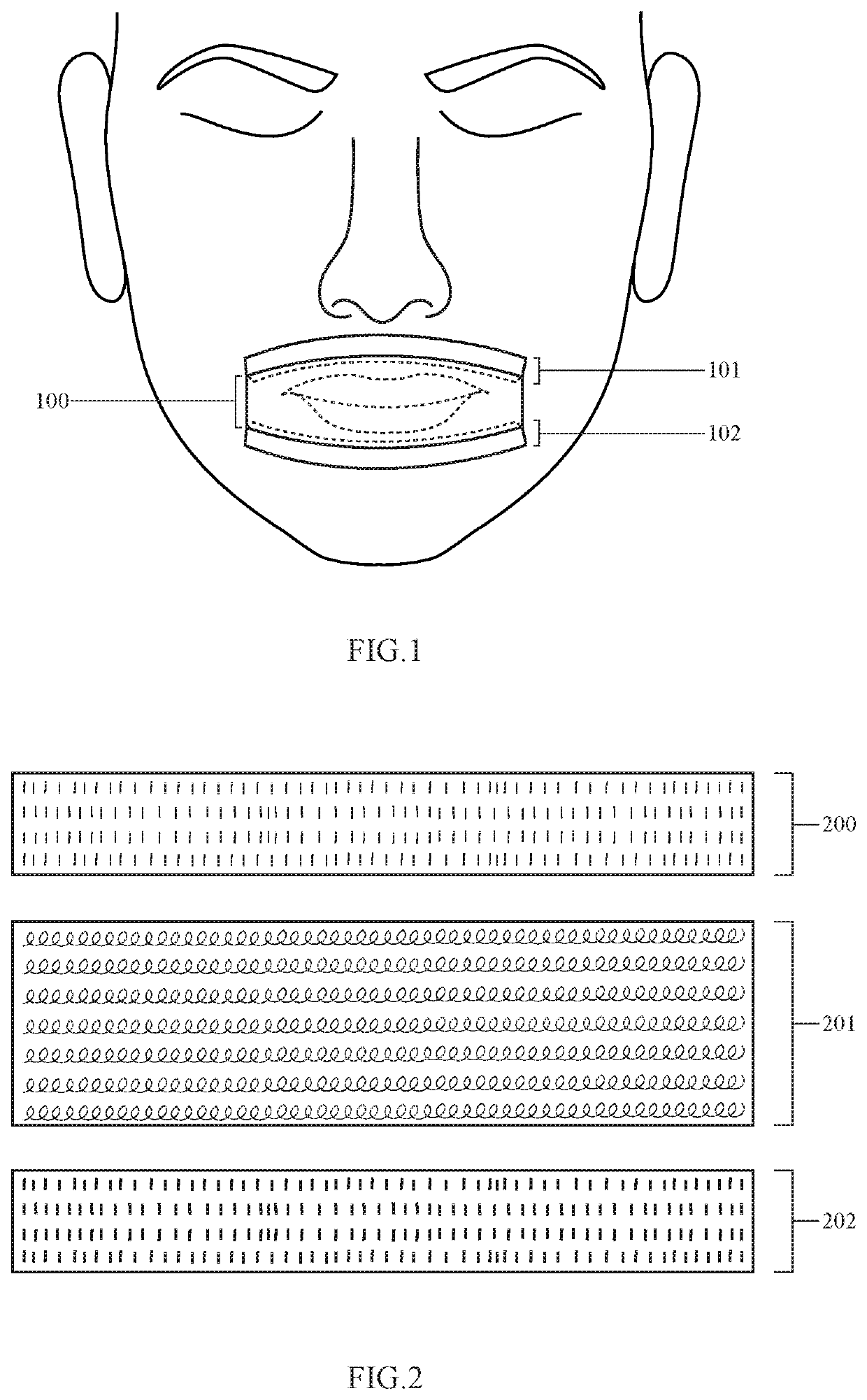Device and method for nasal breathing
- Summary
- Abstract
- Description
- Claims
- Application Information
AI Technical Summary
Benefits of technology
Problems solved by technology
Method used
Image
Examples
Embodiment Construction
[0063]Mouth breathing (also termed open-mouth breathing or mouth breathing habit) is breathing through the mouth rather than the nose. Human infants are sometimes considered obligate nasal breathers, but generally speaking healthy humans may breathe through their nose, their mouth, or both. During rest, breathing through the nose is common for most individuals. Breathing through both nose and mouth during exercise is also normal, a behavioral adaptation to increase air intake and hence supply more oxygen to the muscles. Mouth breathing may be called abnormal when an individual breathes through their mouth even during rest. Some sources use the term “mouth breathing habit” but this incorrectly implies that the individual is fully capable of normal nasal breathing, and is breathing through their mouth out of preference. However, in many cases, mouth breathing represents an involuntary, subconscious adaptation to reduced patency of the nasal airway, and mouth breathing is a requirement...
PUM
 Login to View More
Login to View More Abstract
Description
Claims
Application Information
 Login to View More
Login to View More - R&D
- Intellectual Property
- Life Sciences
- Materials
- Tech Scout
- Unparalleled Data Quality
- Higher Quality Content
- 60% Fewer Hallucinations
Browse by: Latest US Patents, China's latest patents, Technical Efficacy Thesaurus, Application Domain, Technology Topic, Popular Technical Reports.
© 2025 PatSnap. All rights reserved.Legal|Privacy policy|Modern Slavery Act Transparency Statement|Sitemap|About US| Contact US: help@patsnap.com



